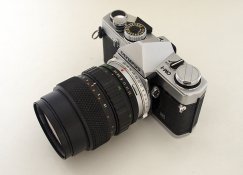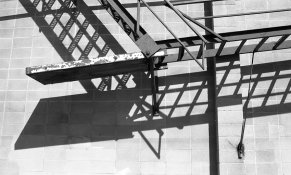Continuing with my previous post, i own about two dozen lenses, and my 35mm lenses are mostly Canon FL/FD, Nikkors, and Canon EF lenses. I have been surprised sometimes to find some compromises made when "shrinking down" the lenses. For example I have a Canon FL 19/3.5R lens, this is a 1965 (!) design that is rather big, and a Nikon AI 20/4.0 lens, a mid 1970s design which was a revolutionary "milestone" for Nikon, for being tiny, as big as a 50/1.8 lens. Both are dramatically different in size. The Canon was also a "milestone" lens, being the widest retrofocus SLR lens available for this format on its time.
So well, both were expensive lenses and the Nikon should have better technology available (coming 10 years later) on it's favor, however when I compare both for correction:
center sharpness: great on both
distortion: really low on both
And then the similarities stop...
vignetting: the big lens benefit from a larger element; the Nikon has a marked vignetting
extreme corner performance: generally poor on the Nikon (corners only get good at f11), while on the Canon they are OK even wide open(!)
So when I see that the later lens (Nikon) should have the upper hand, and the conclusion is that the early lens is a better corrected lens overall, i can't help but conclude that downsizing the lens wasn't possible without compromises.
A similar effect i see with my huge, gigantic Canon FL 85-300/5.0 lens (1964!); yes this is a huge lens, but I see generally good performance at all criteria (bokeh, CA, resolution, distortion), and it's surprising to see that a 1964 zoom could be this good, particularly when sometimes I find some smaller, later zooms that are not as good.
But examining the patent for the FL 85-300/5.0 lens shows a totally conservative design, in the sense that no particular measures were made to restrict the lens size. This can be called "let the lens grow to its natural dimensions", as Leica specialist Erwin Puts once put it. (Pun intended)













 19133F
19133F


